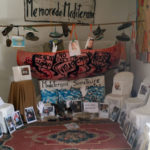Methodology
Firstly, to empirically document immigrant organizations and their functions, we will directly replicate community-based data collection strategies used by Gleeson & Bloemraad (2011) in their pioneering study in Los Angeles, California. We will start with official IRS data (National Center for Charitable Statistics) to identify immigrant organizations in southeast Michigan. Next, to identify entities not included in the IRS data, we will use: interviews with key informants, leaders of community groups, public officials and government staff; ethnic newspapers and resource directories; and web searches.
We will then conduct and analyze surveys and interviews to understand immigrant organizations’ functions, extending methods by Gleeson & Bloemraad. We will survey all immigrant organizations, using survey questions developed out of findings from a study conducted by the PI (that used data from 40 interviews with leaders of refugee community organizations in 35 cities across the United States). Then, we will conduct in-depth interviews with leaders of a sample of organizational entities (those with less than $25,000 in annual funding), drawing on the interview protocol developed by Anuch et al (2015), in a federally-funded study of refugee organizations in Canada.
Secondly, to understand the socio-spatiality of immigrant organizations as embedded within a broader system, we will apply an ethnographic approach using a variety of methods: surveys, interviews, ethnographic on-site fieldwork with visual documentation, and Geographic Information Systems mapping. We will integrate data from surveys and interviews with spatial and visual data from on-site ethnography and GIS, to map and then analyze the ‘urban assemblage’ (Latour; Ureta 2014) of immigrant organizations, in terms of proximity to their immigrant constituents, housing and infrastructure density and compositions, use of public space and built environment, access to existing services and resources, ethnic/racial and class compositions of proximal neighborhoods, and other pertinent local-level factors. We will analyze how immigrant organizations and their quotidian practices and material functions are simultaneously impacted by, responding to and producing urban life, as embedded within territories, social and kinship networks, built environments and institutions.
The geographic scope of the two steps discussed above will be emergent, depending on how data collection progresses. We plan to move sequentially across geographic areas in southeast Michigan. Phase 1 starts with Grand Rapids, and future work will be in Detroit and other cities. The first two steps above will lay the empirical and analytical foundations for a subsequent third aim to create an interactive digital space as resource and coalition-building platform for immigrant organizations in Michigan. We will translate our data and results into a visual representation and argumentation of findings that are informative and user-friendly but also compelling, using StoryMap and other programs. The digital space will be jointly developed and managed with Community Partners. We will pursue other funding partners, including the UM SSW Pilot Grant, UM Small Scale Grant, and UM Graham Sustainability Grant.








